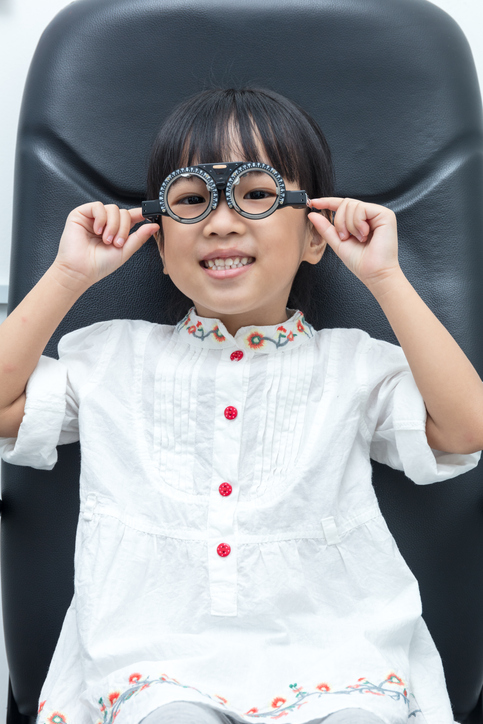 |
|
Females and older children with myopia may be faster progressors, study finds. Photo: Getty Images. |
New research indicates that a gradual shift in refractive error is correlated with certain demographics. The study by the Royal College of Ophthalmologists sought to chart the progression of spherical equivalent (SE) in children.
The study—conducted prospectively—included 3,989 children aged six to 12 years and a total of 7,945 eyes. SE progression was measured over a period of three years with the researchers identifying four categorical types into which eyes were classified: nonmyopic, defined as an SE greater than or equal to +0.76D, premyopic (PM) as an SE between +0.75D and -0.49D, low myopic (LM) as an SE between -0.5D and -5.99D and high myopic (HM) as an SE less than or equal to -6D.
Questionnaires were filled out by parents as to determine how much time their child spent reading and writing, on digital entertainment, doing near work (such as coloring, doing homework or looking at handheld screens) and time spent outside (including physical and leisure activities). Some demographic data of parents was also collected via interview questionnaires.
At baseline, before the three year period began, 40.3% (3,205) of children had PM, 3.4% (274) had LM and 0.1% (7) had HM. After the three year follow-up, 40.5% (3,216) had PM, 7.5% (599) had LM and 0.2% (15) had HM. After three years, the rate of incidence for myopia was low at only 4.6%.
Additionally, rates of both SE and axial length (AL) progression advanced to -1.08D ± 0.76D and 0.63mm ± 0.30mm respectively in LM patients. HM patients experienced significantly more progression with SE and Al rates of -1.60D ± 1.19D and 0.79mm ± 0.47mm, respectively.
Researchers found correlations to faster SE progression to include factors such as female sex, more severe myopia at baseline, older age, increased time doing near work activities and a greater number of parents with myopia.
Regarding high myopic baseline SE, this study’s findings fall in line with other research indicating faster myopic progression occurs in those with a greater baseline myopic refractive error. Younger age was correlated with AL progression, while conversely older age correlated with greater SE progression. SE progression was also related to the amount of time kids spent on near work, while less time outdoors specifically related to greater AL progression. As SE progression relates to near work is still unclear, with prior research ranging from finding no association to positive association.
Gender seems to play an important role in risk, as both SE and AL progression were associated with females. Even further, there was an observed gender difference in rates of progression, although this is likely not clinically significant at the rates of 0.09D in SE progression and 0.04mm in AL progression over the three years.
Identifying risk factors associated with progressive myopia in children of different ages allows for greater understanding of how to help these different age groups. As the authors suggest from some of their findings, “SE progression rates may be useful as guidelines to identify fast progressors who may likely benefit from early or more intensive treatment.” Using these guidelines, the “results may help identify children at risk of progression and determine the best time of treatment intervention or determine the children who may benefit from treatment to slow myopia progression.”
Lanca C, Emamian MH, Wong YL, et al. Three-year change in refractive error and its risk factors: results from the Shahroud School Children Eye Cohort Study. Sp Nature. August 23, 2022. [Epub ahead of print]. |


